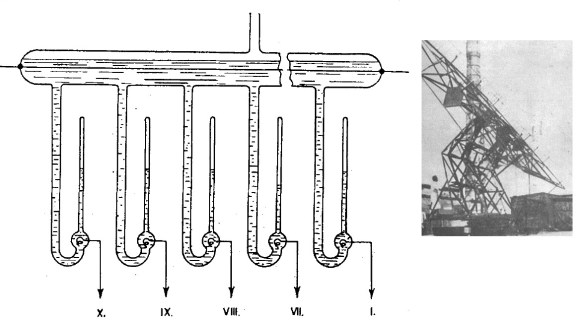In the years before World War II it was theorized that shortwave radio waves could propagate through the ionosphere relatively undisturbed and allow for a signal to be bounced off the moon and returned. [Zoltán Bay] calculated that the return signal would be too faint to be detected above background noise with the radio receiving equipment of the day. To overcome this receiver dilemma he devised a new receiving element consisting of 10 coulometers sharing a common tank of a water solution. Each of the coulometers had a separate electrical connector and when current flowed through the electrode, hydrogen bubbles would form in an attached glass capillary column. By periodically sweeping through all 10 coulometers using a rotating switch attached to the radar receiver, any radar echo as well as random background noise would be readable by the amount of bubbles in the capillary columns. A single radar echo would be indistinguishable from random background noise in the columns of bubbles, but if the sweep is continued for 30 minutes any periodic radar echo would show as an increased accumulation of bubbles in a respective column. By reading these coulometers and knowing the switching period you could determine that you were receiving a true radar echo from the moon.
What an amazing apparatus to amplify a periodic signal above background noise! Nowadays we would call this a long-time integrator or persistence measurement and it’s a relatively simple task. You can download and read [Zoltán Bay’s] paper on “Reflection of Microwaves From the Moon” dated 1946 in PDF form. His integrator apparatus details start on page 17.
It took some years but in 1946 [Zoltán Bay’s] receiving apparatus was tested and did confirm reception from moon bounce. However, U.S. Army Signal Corps with better crystal frequency stabilized equipment was able to perform the same task earlier as seen in the below video without the use of an integrator. Even though the U.S. Army equipment was superior for this task [Zoltán Bay’s] apparatus enjoyed years of service in the field of planetary radar observation where such a high sensitivity scheme was still necessary.
Continue reading “Retrotechtacular: [Zoltán Bay’s] Moon Bounce Coulometer Signal Amplifier”











